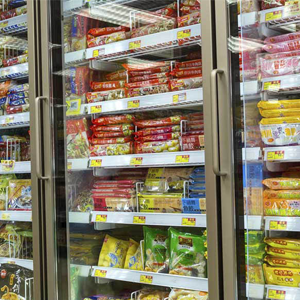 What is commercial refrigeration? It’s more than a question of scalability, that’s for certain. Sure, a commercial cooling unit is large, so there’s probably a walk-in unit hosting a small mountain of perishable foodstuff located somewhere. But what about airflow? What about the other factors that require proper evaluation in this commercially rated cooling scenario?
What is commercial refrigeration? It’s more than a question of scalability, that’s for certain. Sure, a commercial cooling unit is large, so there’s probably a walk-in unit hosting a small mountain of perishable foodstuff located somewhere. But what about airflow? What about the other factors that require proper evaluation in this commercially rated cooling scenario?
Deconstructing Commercial Refrigeration
Familiar insulated enclosures and refrigeration methods operate here, but that technology is catering for a larger customer base. Beyond a capacity increase, new issues require management. If this is a walk-in unit, the shelves and containers need to be intelligently arranged. Otherwise, a warm spot will occur because the refrigeration unit isn’t distributing its arctic air evenly. Next, commercial refrigerators divide themselves into discrete units. There’s the standard coolroom, an enclosed area that contains chilled beverages and vegetables, plus the occasional dairy product. Meanwhile, a walk-in freezer drops its interior environment far below 0°C. Products stored here include huge cuts of meat, the stuff that requires defrosting before it can be cooked.
Managing the Energy Gluttons
Unfortunately, commercial refrigeration appliances require a great deal of electrical energy. Lots of input electricity is producing plenty of icy output air. It’s because of this energy expenditure that a big cooling unit consumes more money than any other equipment in a business establishment. Ask an hotelier or restaurant owner where their energy overheads go each quarter. Invariably, they’ll tell you it’s the big freezers that take a bite out of their budget. Happily, there are a few corrective actions available. Turn down the thermostat, even by a few degrees. As long as the spoilable products remain safely frozen, then ten percent of your energy costs can be recovered by taking this simple action. Strengthen this energy conservation strategy by staying energy aware. Shut the refrigerator door if it’s ajar, install a potent wall insulation system, and generally keep the equipment operating efficiently.
High-capacity cooling equipment is the first requirement when commercial refrigeration gear is incorporated. The cooled enclosures obviously use a larger volume of chilled air, which means the airflow conditions and room insulation must be assessed. Those conditions then yield to two distinct environmental settings. First of all, there’s a generally chilled alcove, an area that cools beverages, ready-to-consume food, and prepared meals. Above this cool room scenario, energy hungry walk-in freezers store spoilable meats and ice cream, frozen veggies and ice cubes. All of this commercial refrigeration equipment keeps enough food fresh and drinks cold to feed a party, a restaurant, or any other large gathering.
